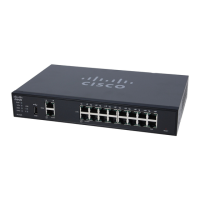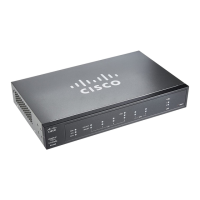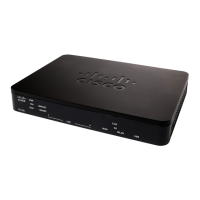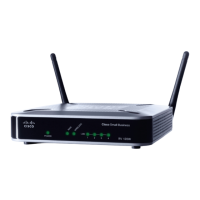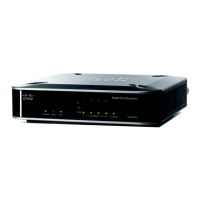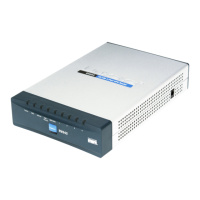DHCP
Option 82
Cisco RV320/RV325 Administration Guide 49
4
The Client Table shows the DHCP client information:
• Client Host Name—Name assigned to a client host.
• IP Address—Dynamic IP address assigned to a client.
• MAC Address (IPv4 only)—MAC address of a client.
• Client Lease Time—Amount of time that a network user can remain
connected to the router with a dynamic IP address.
To release an IPv4 client IP address, select the Client Host Name and click Delete.
Click Refresh to renew the data.
Option 82
Option 82 (DHCP relay agent information option) enables a DHCP relay agent to
include information about itself when forwarding client-originated DHCP packets
to a DHCP server. The DHCP server can use this information to implement IP
addressing or other parameter-assignment policies.
The DHCP Option 82 Configurable Circuit ID enhances validation security by
allowing you to determine what information is provided in the Option 82 Circuit ID
description.
To add a Circuit ID, click Add. A new row is added to the table and the circuit IDs
are listed in the Circuit ID drop-down menu in the DHCP Setup window.
To edit a Circuit ID, select the row and click Edit. The row is opened for
modification.
IP and MAC Binding
When the device is configured as a DHCP server or for DHCP relay, you can bind
static IP addresses to up to 100 network devices, such as a web server or an FTP
server. Binding does not assign an IP address to a device. You should ensure that
each device bound to a static IP address in the IP & MAC binding table is
configured to use a static IP address.
Typically the MAC address of a device physically appears on a label on the
bottom panel or back panel of a device.
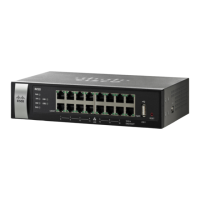
